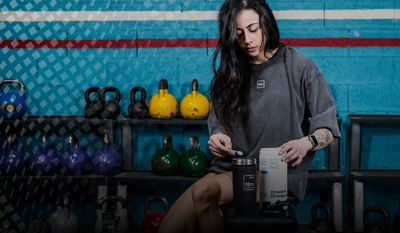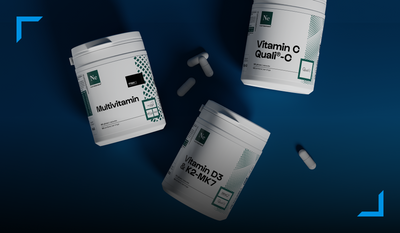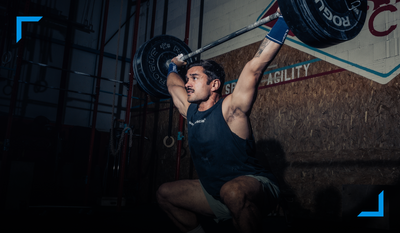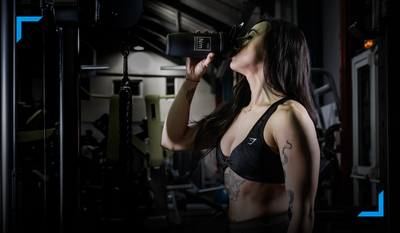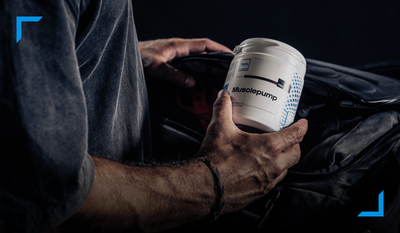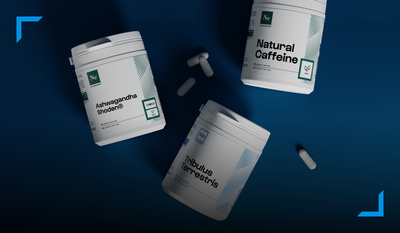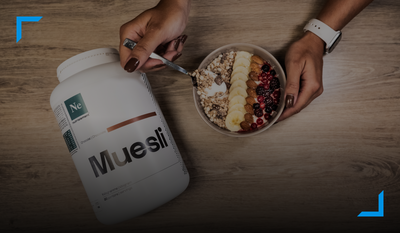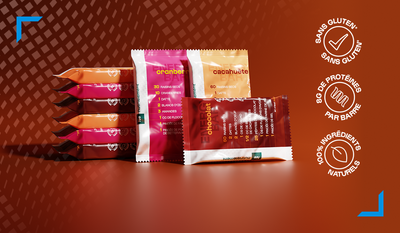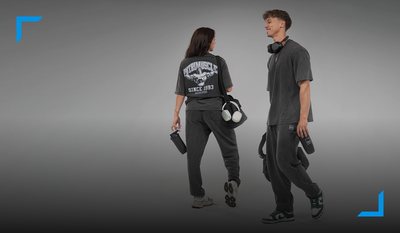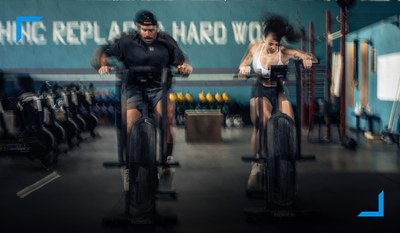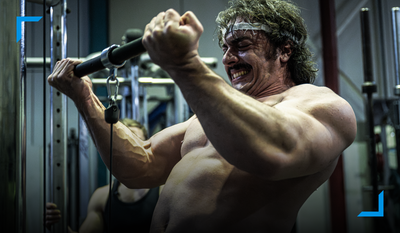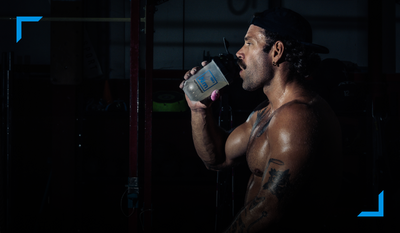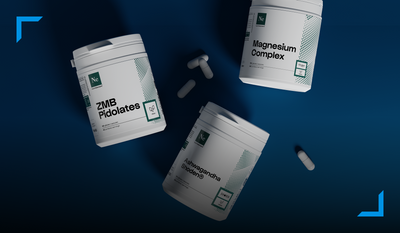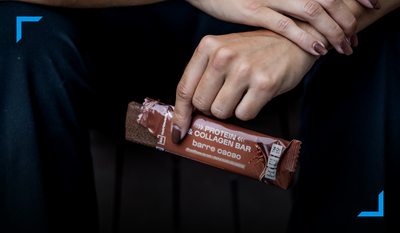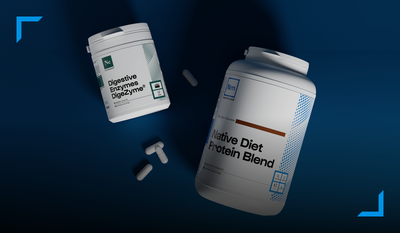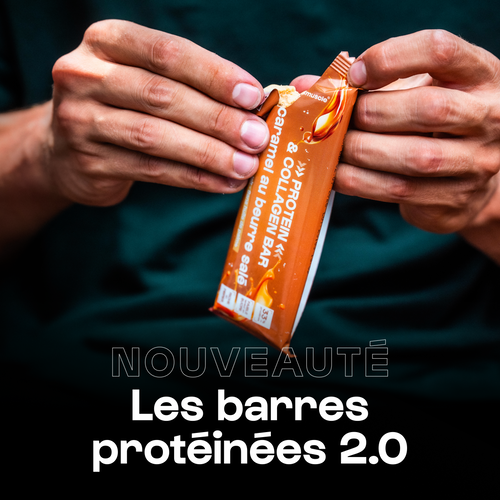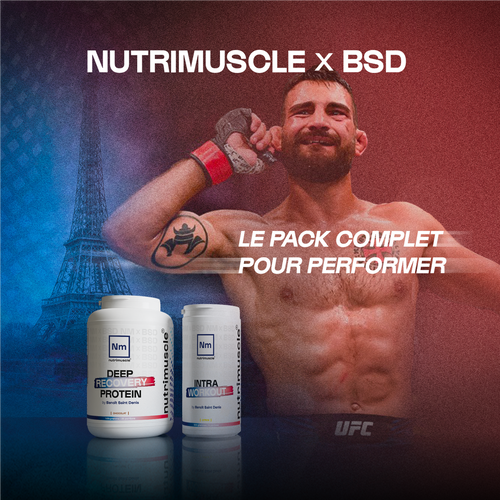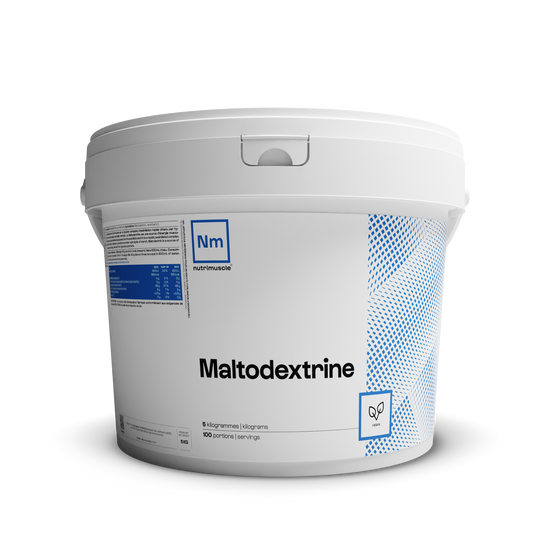0 commentaires
If you are sporty or sporty, you are probably wondering how to recover well after sport. What are the secrets of a good recovery? Nutrimuscle accompanies you in order to provide you with useful and relevant information on the subject.
Contents
- Water recovery
- Rebalance your blood pH
- Energy recovery
- Immune recovery
- endocrine recovery
- muscle recovery
- Joint recovery
- nerve recovery
The secrets of a good recovery
There is no global recovery, but eight recovery phases , which, put together, make the muscles progress, stagnate or regress.
To grow your muscles, strengthen them and make them gain in endurance and resistance, you have to act optimally on each of these phases so that they are as fast and as efficient as possible.
1 - Water recovery
During and after exercise, it is vital to replace water and minerals that have been lost during training. Poor rehydration will be associated with persistent fatigue and cramps . The integrity of the muscle mass is then called into question and general regeneration risks slowing down.
Water recovery should be a priority , especially in hot weather. Medical research has shown that simply drinking water is not the most effective way to rehydrate, because the more water you drink, the more you will urinate (1). This water will therefore not rehydrate the muscles or replace the lost blood fluid.
Rehydration is much more effective thanks to a combination of milk proteins such as whey mixed with carbohydrates (maltodextrin) and ZMB pidolates minerals. Using this stack right after training (whether it's weight training, cardio, or sports prep), rehydration shouldn't take more than a few hours.
2 - Rebalance your blood pH
A muscular effort, whether prolonged or very intense, will generate acid from the lactic acid produced by our muscles. This acid is a vector of fatigue. Our kidneys are responsible for expelling excess acid from the blood. But instead of leaving them on their own, we can help them by dabbing (destroying) this acid.
For this, there is a natural antacid: bicarbonate. Our cells naturally produce bicarbonate in order to protect themselves from the acid generated by everyday life. But they are far from producing enough to buffer the torrents of acids that pour out during an effort.
By drinking potassium bicarbonate during and after exercise, it is possible to eliminate excess acid. Thus, we are more efficient during the effort and we recover more quickly from fatigue after the effort.
If one does not help his kidneys, the acid will accumulate in the blood for many hours, propagating a diffuse feeling of fatigue.
3 - Energy recovery
This is an aspect of recovery that, after rehydration, should be a priority for an athlete .
It should be quite fast provided it provides the body with the compensatory energy for the effort, as quickly as possible. Research has shown that muscle glycogen resynthesis is 30% faster with a combination of liquid carbs (maltodextrin, dextrose, or waxy maize) + milk protein (whey or casein), compared to carbs alone (2).
A gainer like the Musclemasse 5 is perfectly appropriate after exercise .
Cereals such as oats or barley, especially in powder form, are very digestible and easy to drink with their protein powder ( whey or casein ). For people wishing to avoid gluten, these cereals can be replaced by powdered buckwheat.
4 - Immune recovery
Our entire immune system is turned upside down by intense efforts.
The activity of certain immune cells will be overexcited while other defenses will be temporarily inhibited. An immune disorder ensues, which facilitates the onset of opportunistic illnesses such as colds.
Post-exercise glutamine supplementation can reduce the extent of these upheavals and accelerate their disappearance. Also regularly use omega 3 supplementation. Pre-biotics and pro-biotics also support the immune system by acting directly on the intestine, where many immune cells are produced.
5 - Endocrine recovery
The regulation of endocrine balances is temporarily disturbed after physical exertion. These imbalances should not last more than a few hours. But in case of overtraining, these disturbances can be accentuated and become chronic.
The goal of supplementation is to smooth out these fluctuations, particularly when it comes to catabolic hormones like cortisol. To do this, use a combination of Tribulus Terrestris, BCAAs, (from ZMB pidolates) and carnitine, which will optimize the natural secretion of anabolic hormones, while minimizing that of catabolic hormones.
6 - Muscle recovery
The five types of recovery that we have just described should take place in a few hours or even a few tens of hours, at most. On the other hand, muscle recovery is much more laborious. We realize this slowness when we have aches. These usually take several days to disappear.
Muscle regeneration will be favored by the use of whey, Peptopro, BCAA, and creatine , especially just after training, but not only.
Indeed, muscle recovery takes place over several days, you must continue to take protein and creatine throughout this regeneration period. Thus, it is wise to continue to supplement. This applies even on rest days, because even if you haven't exercised your muscles, they still continue to strengthen and grow long after the effort. In case of intense body aches, vitamin C and carnitine are also two supplements that help eliminate these disabling muscle pains more quickly.
7 - Joint recovery
The joints are put to the test by sports activities. Training when the joints, tendons or ligaments have not recovered well will not seem to be a problem at first.
But chronic pain may end up settling due to the accumulation of deficiencies in joint recovery. This regeneration is even slower than muscle recovery. Promote it thanks to the naturally anti-inflammatory and anti-catabolic properties of omega 3 and creatine on cartilage.
N-AcetylGlucosamine will act as a lubricator and repairer of articular cartilage. Chondroitin helps protect cartilage from degradation and catabolism, which perfectly complements the anabolic effects of N-AcetylGlucosamine.
Peptan contributes to nourish the tendons, which promotes their recovery as well as their strengthening.
8 - Nervous recovery
The recovery of the nervous system, especially in strength sports, is the one that takes the longest. Unfortunately, there are quite a few supplements that can speed it up.
Chronic fatigue can result from neglecting this aspect of recovery. When, from one training session to another, we have lost strength on the same exercise, it is typically a sign that nervous recovery has not had time to take place.
While muscle recovery can take from 2 days (for a moderately intense workout) to 5 days (for a traumatic workout), nerve recovery can take more than 10 days. The more we push our body to the maximum, the more laborious the nerve recovery will be.
It is therefore the biggest factor limiting progress and PTO. While there are many substances capable of increasing the intensity of training (guarana, green tea, Svetol Bio or Natural Bio Booster, for example), there are hardly any supplements capable of accelerate the speed of nerve recovery. An imbalance leading to a chronic decline in strength can easily set in.
In order to help nerve recovery, there are nerve relaxants like Yerba Mate and pidolate.
Scientific references
(1) Jamesa LJ. Milk protein addition to a post-exercise carbohydrate–electrolyte rehydration solution. Is there a dose-response relationship? Proceedings of the Nutrition Society (2011), 70: E118
(2) Berardi JM. Post-exercise muscle glycogen recovery enhanced with a carbohydrate-protein supplement. Med Sci Sports Exercise. 2006 Jun;38(6):1106-13.




